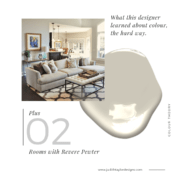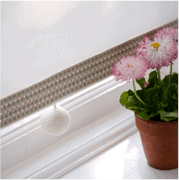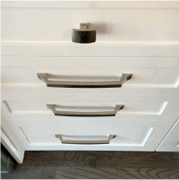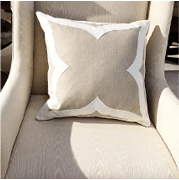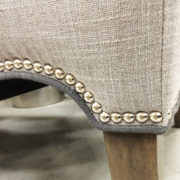Everyone loves natural light in their homes, but beauty and functionality come with carefully chosen window treatments. We know from hearing from our clients’ that there are so many options it can be overwhelming. When you know how high to hang your drapes you will cinch a “pro” look. That’s a good start but read on. To help narrow down which treatment is right for your home, here are some drapery 101 basics.
Window treatments aren’t only for aesthetics, but for practicality and because of this, understanding how you want your window treatment to function will help your decision.
Consider These Functions When Looking for New Drapery
Drapery Can Moderate Heat Transfer and Glare
Drapes and blinds help to manage heat transfer, can create a soothing dark environment and will prevent glare from disrupting your vision when lounging or completing tasks indoors. An added bonus is that drapes protect your fabrics and carpets from fading due to UV rays, helping to maintain your interior for years to come.
Weather
Speaking of weather, we’ve mentioned before about how drapes can benefit your home during hot weather or in hot climates however, they can be beneficial during cooler seasons too. Drapes are a great way to block drafts in older homes, or during colder seasons.
Room Darkening
If you are someone who needs complete darkness to sleep, listen up! As a migraine sufferer myself, I feel you here. Installing drapes will help to improve your sleep quality, and you can wake up in complete darkness – just like in a hotel! There are many options when it comes to room darkening. Use blackout lining (for full light blocking), dim-out (for partial light blocking), or layer both shades and drapes to control the level of light to suit your needs throughout the day.
Increased Security
Window treatments can block natural light. An extra bonus is that they obstruct the view of people outside too. If you want to increase your level of privacy, or prevent intruders from looking into your home, window treatments are a great security measure.
Sound Dampening
If you have ever toured an empty house, you may have noticed how “noisy” a house can be without it’s soft furnishings in it. The biggest player in absorbing sound are the soft furnishings – drapery and carpet. Add floor to ceiling drapes to make your home all-dressed and less noisy.
Aesthetics
The quote “form follow functions” is key. Window treatments can fulfill many functions as we have described, but they can also complete a room and give your windows a decorative edge. Similar to choosing a rug or light fixture, your window treatment should be cohesive with the room style they will be in.

Here are a few basic design tricks and tips to get you started:
- Hang your drapes as high as possible above the window. We find that about 2-3 inches below the crown moulding looks best in rooms with typical proportions. This will make the room and the window appear taller.
- Extend the rod at least 6 inches from the window casement on either side, but consider going further – much further. This will allow room for the drapes to stack outside the window and create the illusion of a much wider window.
- Unless you are going for that sheer gauzy romantic look of a modern sheer, always line your drapes! It gives the fabric more body, and makes them hang better. Bonus: they will look more expensive!
- Drapery lengths, like hemlines change with the styles but we always prefer drapes that just kiss the floor when possible. Clean and simple!














